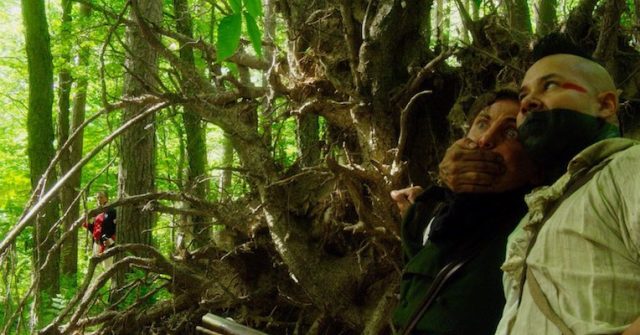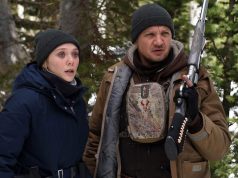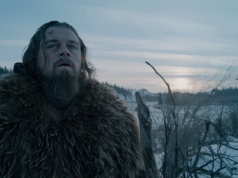
[In theaters and Video on Demand.] ••• The Civil War gets all the attention when it comes to 19th-century American conflicts, but what about the War of 1812? “Mohawk,” a contemplative bloodbath by Ted Geoghegan (“We Are Still Here”), finds compelling drama in this overlooked skirmish and the way Native Americans were caught in the middle of it. In the process, he shines a light on toxic attitudes that are uncomfortably relevant today.
Fitting, I suppose, for a movie about a three-way war, at the center of “Mohawk” is a three-way relationship. In New York state in 1814, Oak (Kaniehtiio Horn), a Mohawk woman, lives in the woods with Calvin (Justin Rain), also of her tribe, and Joshua (Eamon Farren), a British soldier who’s abandoned his post. We aren’t privy to the details of their polyamorous lifestyle — OK, fine, the only thing we don’t know for sure is whether the two men are intimate with each other or just with her (SUE ME FOR WONDERING!) — but it’s working for them, to the extent that anything can work under the circumstances.
The circumstances, of course, are that all three must stay hidden from the American troops, who are basically killing every redskin or redcoat they find. The situation grows more urgent when hotheaded Calvin preemptively slaughters a camp full of U.S. soldiers and the three have to go on the run, pursued by Col. Hawkes (Jack Gwaltney), his virulently racist second-in-command, Hezekiah Holt (Ezra Buzzington), Holt’s son Myles (Ian Colletti), a one-eyed tracker named Beal (Robert Longstreet), hulking soldier Lachlan (pro wrestler Jonathan Huber), and a cowardly, literally sniveling translator, Yancy (Noah Segan).
Geoghegan, co-writing with Grady Hendrix, strives for historical accuracy as much as possible. He cast actual Native Americans to play the Native Americans, and he treats Mohawk customs respectfully, not as a gimmick or a symbol of exotic “otherness.” When violence erupts between our trio and the soldiers, we hear the bullets whizz through the air after being expelled from their clunky muskets, which the shooters must then hastily reload. Guns are inefficient here; fortunately, there are other ways to maim and kill one another, and both sides prove adept.
Hezekiah Holt’s stated purpose of exterminating the Indians, shared to varying degrees by his men, makes it hard not to think of today’s nationalists and other racists, though the film doesn’t do much to explore that angle. Nor does the film delve into the unorthodox relationship at its center — too bad, since that’s the one element of the story that’s not often found in other movies of this type. At its core, “Mohawk” is a serviceably brutal revenge thriller with an uneasy tension that lingers past the closing credits.
B- (1 hr., 31 min.; )





